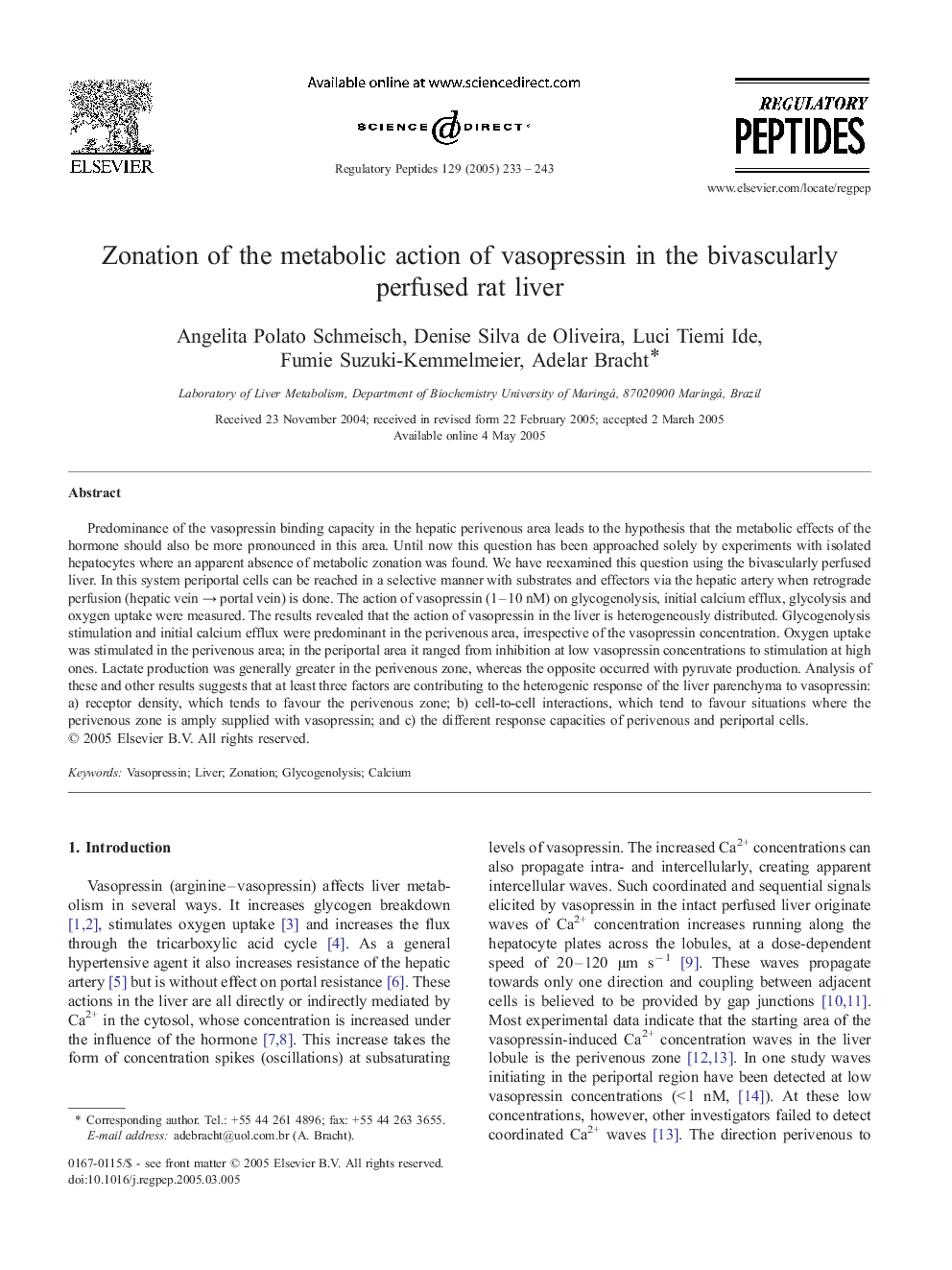| Article ID | Journal | Published Year | Pages | File Type |
|---|---|---|---|---|
| 9894429 | Regulatory Peptides | 2005 | 11 Pages |
Abstract
Predominance of the vasopressin binding capacity in the hepatic perivenous area leads to the hypothesis that the metabolic effects of the hormone should also be more pronounced in this area. Until now this question has been approached solely by experiments with isolated hepatocytes where an apparent absence of metabolic zonation was found. We have reexamined this question using the bivascularly perfused liver. In this system periportal cells can be reached in a selective manner with substrates and effectors via the hepatic artery when retrograde perfusion (hepatic vein â portal vein) is done. The action of vasopressin (1-10 nM) on glycogenolysis, initial calcium efflux, glycolysis and oxygen uptake were measured. The results revealed that the action of vasopressin in the liver is heterogeneously distributed. Glycogenolysis stimulation and initial calcium efflux were predominant in the perivenous area, irrespective of the vasopressin concentration. Oxygen uptake was stimulated in the perivenous area; in the periportal area it ranged from inhibition at low vasopressin concentrations to stimulation at high ones. Lactate production was generally greater in the perivenous zone, whereas the opposite occurred with pyruvate production. Analysis of these and other results suggests that at least three factors are contributing to the heterogenic response of the liver parenchyma to vasopressin: a) receptor density, which tends to favour the perivenous zone; b) cell-to-cell interactions, which tend to favour situations where the perivenous zone is amply supplied with vasopressin; and c) the different response capacities of perivenous and periportal cells.
Related Topics
Life Sciences
Biochemistry, Genetics and Molecular Biology
Biochemistry
Authors
Angelita Polato Schmeisch, Denise Silva de Oliveira, Luci Tiemi Ide, Fumie Suzuki-Kemmelmeier, Adelar Bracht,
